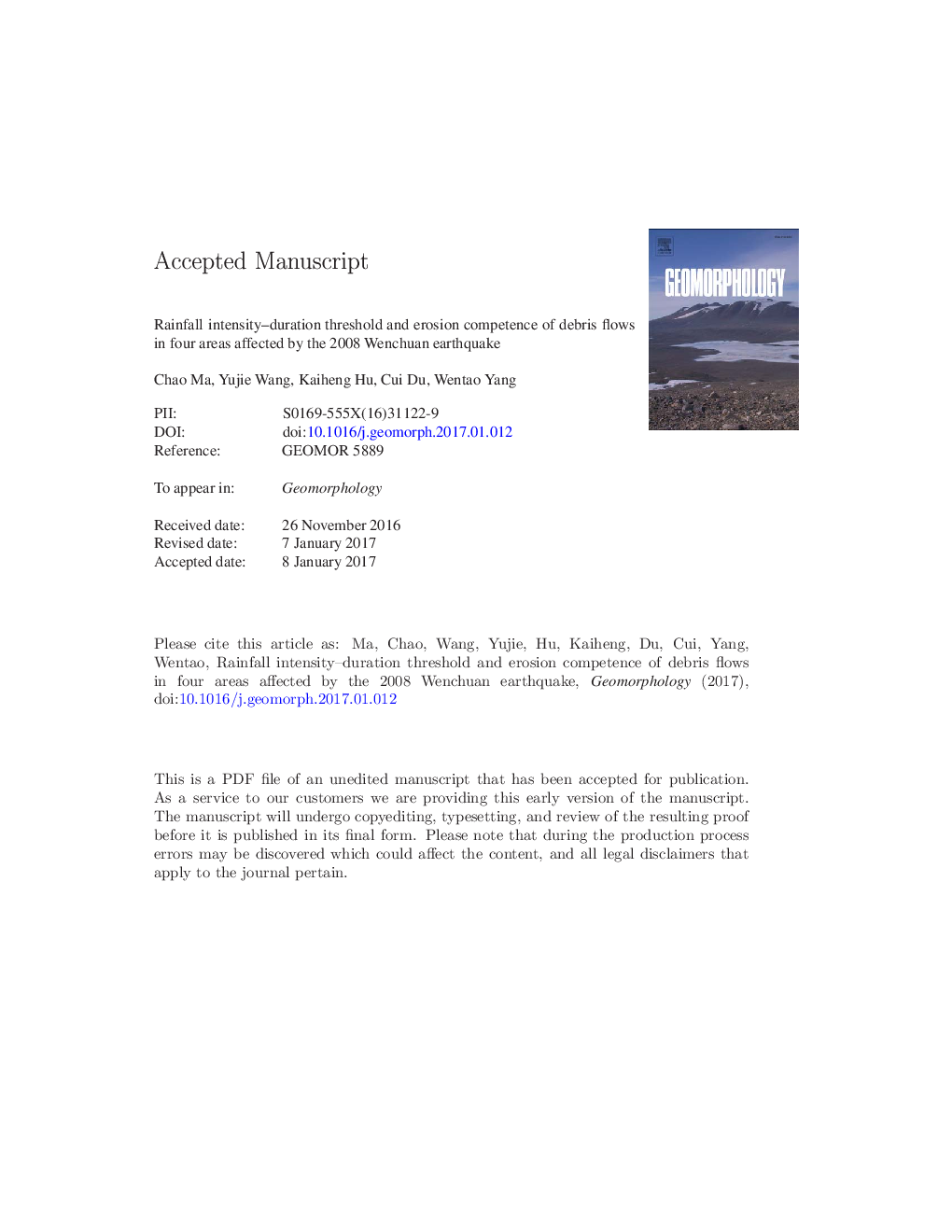| Article ID | Journal | Published Year | Pages | File Type |
|---|---|---|---|---|
| 5781120 | Geomorphology | 2017 | 63 Pages |
Abstract
Debris flows in the Wenchuan seismic region have caused human casualties and severe damage to local infrastructure. Consequently, the triggering rainfall threshold and erosion capability of post-quake debris flows has become an important research topic worldwide. In this study, we analyze five years of rainstorms and debris flow data from four typical earthquake-hit regions in order to examine the local rainfall intensity-duration (I-D) thresholds and debris supply conditions. It was found that debris flow events in the four seismic areas exhibited different I-D thresholds, related to local mean annual hourly precipitation and debris flow supply conditions. The I-D thresholds, normalized by mean annual maximum hourly rainfall, illustrate that post-quake rainfall thresholds were reduced by at least 30% compared to pre-quake levels. Regression analysis revealed a clear linear relationship between the debris supply condition and the empirical coefficient, α, of the I-D equation. This means that rainfall thresholds of post-quake debris flows in different areas are distinctive and are strongly affected by sediment volume. Different relationships between the entrainment rate and the debris volume per watershed area and its product with the channel gradient illustrate that stream sediments in Yingxiu and Dujiangyan are more eroded, and that local debris flows might persist over a shorter time than in Qingping and Beichuan in the future. Finally, debris flows in the studied area exhibit no tendency of reduction in erosion competence entrainment rate, as found in Taiwan, which might be indicative of a higher entrainment rate persisting for a longer time.
Related Topics
Physical Sciences and Engineering
Earth and Planetary Sciences
Earth-Surface Processes
Authors
Chao Ma, Yujie Wang, Kaiheng Hu, Cui Du, Wentao Yang,
